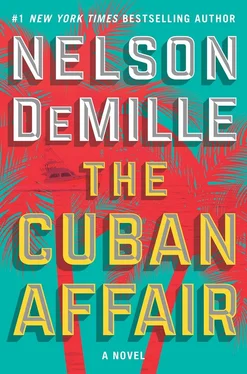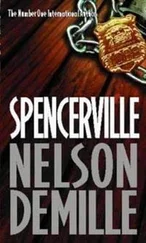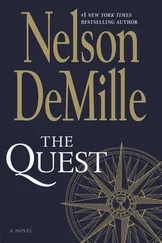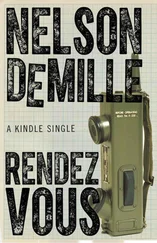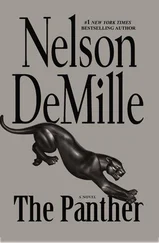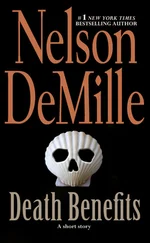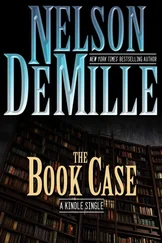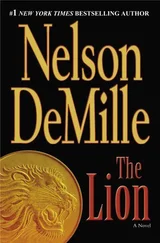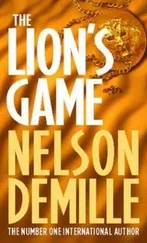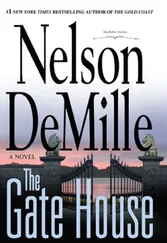Sara took my arm and led me past an imposing mausoleum of the Spanish royal family to a smaller burial vault whose inscription read: AMELIA GOYRI DE LA HOZ. Carved in marble was the figure of a woman with a baby in her arms. About a dozen people stood or knelt around the tomb, which was piled with hundreds of fresh flowers.
Sara said, “This is the tomb of La Milagrosa — the Miraculous One.”
“Right.”
“She died in childbirth on May 3, 1901, and was buried here with her stillborn child at her feet. For many years after her death her grieving husband visited the grave several times a day. He would always take hold of one of those brass rings on the tomb and knock when he arrived, then back away as he left so he could see her resting place for as long as possible.”
In fact, a number of people who approached the tomb were doing just that.
Sara stood silently, looking at the tomb, then said, “After her husband died, Amelia’s sarcophagus was opened and her body was found to be incorrupt — a sign of sanctity in the Catholic faith. And the baby that had been laid at her feet was now found cradled in her arms.”
Okay.
“Since then, she has been called La Milagrosa, and if you pray to her for a miracle, it will be granted.”
We should have come here sooner.
Sara approached the tomb, knocked three times with the brass ring, then knelt with a dozen others, mostly women. She prayed, made the sign of the cross, then stood and walked away backward, still facing the tomb.
She took my arm and we strolled down a tree-shaded lane between the tombs and statues. She said, “Many childless women pray at Señora Goyri’s tomb for a pregnancy.”
“Excuse me, but that’s not a miracle I would have prayed for.”
She smiled. “Relax. I prayed for a successful mission and a safe journey home.”
That would be a miracle.
We wandered around the necropolis, which was filled with tour groups, and every time we passed some of our Yale group, I said to Sara, “I see dead people.”
She didn’t think that was funny, but she seemed in a better mood than last night after Antonio’s proposition. In fact, she said, “I’m happy to put Havana behind us and get on the road to Camagüey.”
“Assuming we don’t meet our Havana contact in the next few hours, how do we get to Camagüey?”
“Carlos had a contingency plan.”
“Which is?”
“A livery service in Miramar used by foreign business people that will take us anywhere we want to go in Cuba. Cash, no questions asked, and no record of the trip.”
I wish I’d known this last night, when I was trying to talk her into taking a taxi to Cayo Guillermo.
Sara added, “When we get to Camagüey, we become backpackers — and cave explorers.”
“Okay. And how do we get the dozen steamer trunks to Cayo Guillermo?”
“You steal a truck.”
“Right.”
“From Camagüey to Cayo is about a hundred and eighty miles. We can make that in three or four hours.”
“And what do we do when we get to Cayo Guillermo?”
She stayed silent a moment, then replied, “We go to a resort hotel called the Melia and sit in the lobby bar.”
Well, I knew that someone must know what Sara and I were supposed to do in Cayo Guillermo. Turns out it’s Sara.
“At seven P.M. each day, starting last night, there will be someone in the lobby bar who knows what we look like and who will approach us.”
“ID phrase?”
“He — or she — will say, ‘It’s good to see you here.’ ”
Indeed it would be.
“He or she will tell us the plan to get the goods onboard The Maine.”
“Okay.”
Sara continued, “The Melia Hotel’s clientele are mostly European and Canadian tourists, so we’ll fit in.”
“And where do we park the truck with sixty million dollars while we’re having a drink?”
“I’m told we can see the hotel parking area from the lobby bar. Or you can stay in the truck with your gun.”
“Can I get a roadie?”
“We’ll play this by ear when we get to the hotel.”
I had more questions, but she’d told me enough — the last piece of this plan — to carry on without her, which was why she was telling me this. “Okay. I get it.”
She took my hand and we continued through the quiet cemetery, then turned back toward where the bus was parked.
Aside from the tomb of La Milagrosa, there weren’t many locals visiting graves on this Monday morning, and we were alone on the path except for a guy in a black shirt coming toward us. He was about thirty, tall and lean, and he wore wraparound sunglasses. I said to Sara, “I saw that guy near the bus.”
She looked at him as he approached, then let go of my hand and we slowed our pace.
As the guy got within ten feet of us, he looked around, then stopped.
Well, I didn’t want my back to this guy, so we, too, stopped, about five feet from him. The three of us stood there, then Sara said to him, “Buenos días.”
He returned the greeting, then said to her in English, “Are you interested in Cuban pottery?”
As the bus made its way from the cemetery to the Parque Central, Tad reminded us that our afternoon was on our own — for meaningful independent cultural experiences — until our 5 P.M. lecture given by Professor Nalebuff. Then to dinner at 6:30 at Mama Inés.
“Chef Erasmo,” said Antonio, “has cooked for Fidel Castro and Hugo Chávez. Also Jane Fonda, Jack Nicholson, and Jimmy Carter.”
All of whom got the senior citizen discount.
Well, our much-anticipated meeting with our man in Havana wasn’t as interesting as Sara’s meeting with Marcelo on the Malecón. Our guy just handed Sara a flyer advertising a nightclub called Cabaret Las Vegas. This is the kind of thing you toss in the next trash can, but the man said the magic words, so Sara scanned the flyer as we walked toward the bus, then handed it to me.
Written in pencil on the flyer was an address: Calle 37 № 570, El Vedado. And a time, 22 h , which five years in the Army taught me meant 10 P.M.
Sara said that this would be where we would meet our Havana contact, who would give us our instructions for meeting our contact in Camagüey, and provide our means of transportation.
Or sell us pottery. I asked, “Should we thank La Milagrosa for this timely miracle?”
“I already have.”
“Right.”
We committed the address to memory and Sara made confetti out of the flyer and dropped it into a storm drain on our way to the bus. As we boarded, Antonio said to Sara and me, “We will meet in the rear of the lobby.”
My dance card was filling up.
Our tour bus pulled up to the Hotel Parque Central and Alison advised, “Dress at Mama Inés is casual.”
Which was good, because we’d be living and sleeping in the same clothes for awhile.
We filed off the bus and Sara and I walked to the rear of the lobby, where Antonio joined us. Tad noticed, and he hesitated before he got on the elevator. I was sure this was going to be his last trip to Cuba. Mine, too.
Antonio looked at Sara. “Thank you for the envelope.” He patted the side pocket of his tight black pants. “And I have good news for you. I made calls last night and you will be expected at the Sierra Maestra Cruise Terminal tomorrow morning at seven.” He glanced around and said in a conspiratorial voice, “A man named Ramón will meet you at the entrance and walk you through passport control and onto the British cruise ship The Braemar, which sails at nine for Bridgetown in Barbados.” He looked at Sara. “I assume you wish to be on that ship?”
She nodded. “We do.”
“Good. You will be ticketed onboard and pay for your passage with a credit card.” He smiled. “I am your travel agent. And your guardian angel who will give Ramón a thousand dollars to pay people who will get you through security.”
Читать дальше
